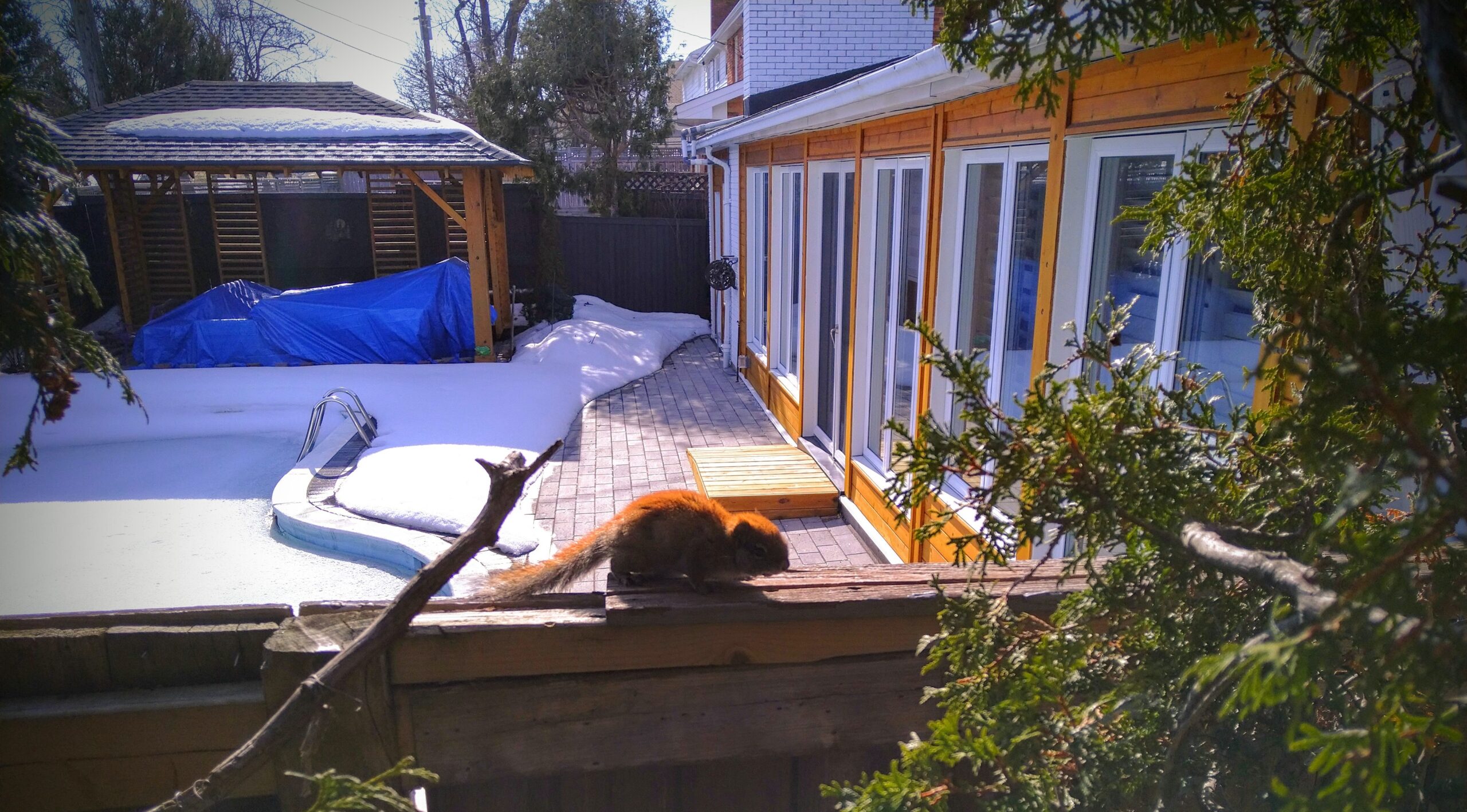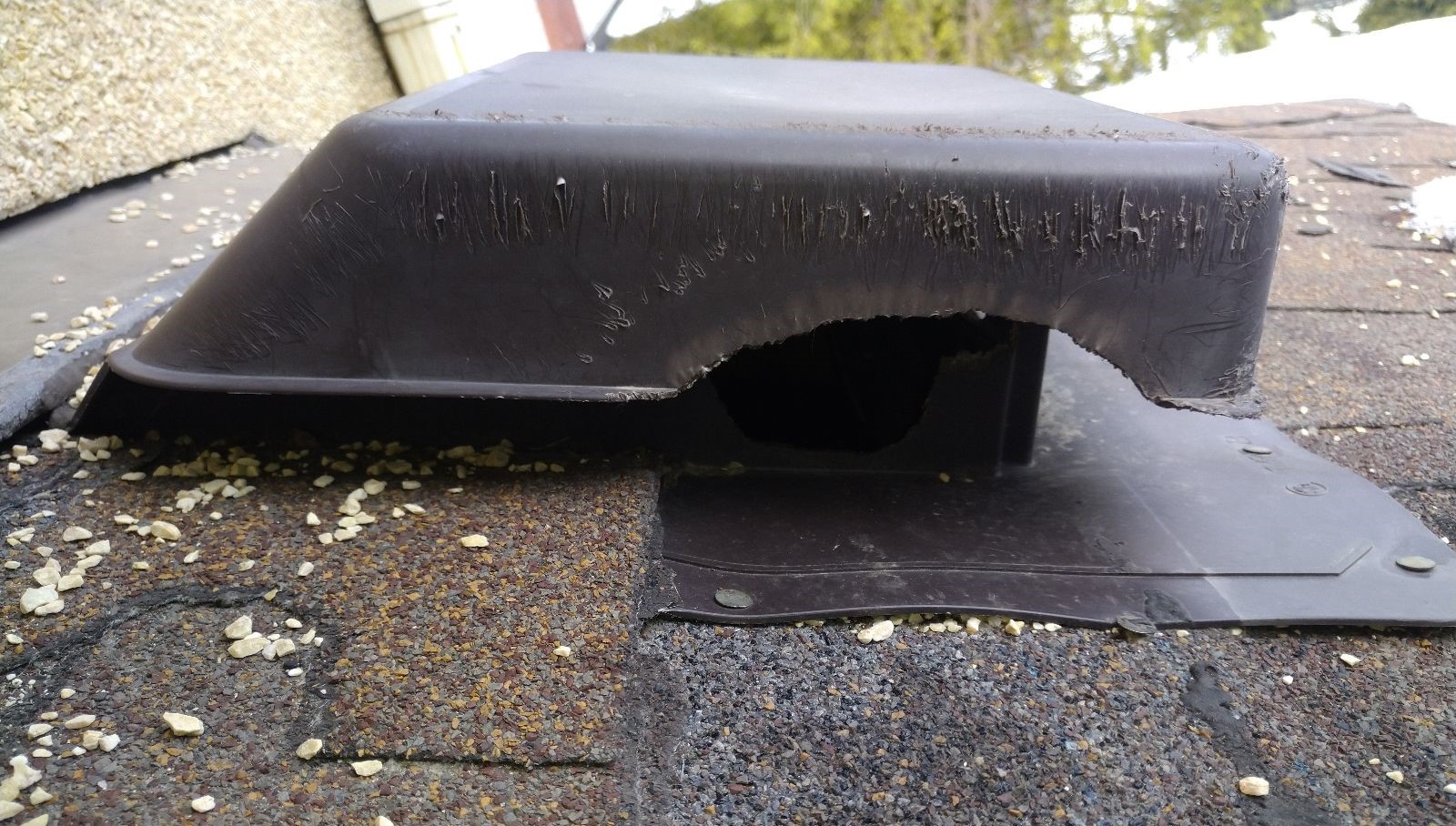SQUIRREL REMOVAL PROCESS
Assess and Remove
Our comprehensive 50 point home inspection is designed to determine squirrel entry points and home damage. The attic is a common den site for squirrels where they gain accessing by chewing holes or slipping in between building materials. We then use hands-on removal techniques to humanely evict the squirrels.
Clear and Clean
Squirrels are notorious for creating large, messy nests within their den site and causing damage through chewing. Skedaddle will thoroughly clear away any nesting material and debris from the den and clean up the mess left behind. We can also replace soiled insulation and damaged ductwork if required.
Prevent and Protect
Our final step is making sure your home is protected, not only against the current intruders, but all the other squirrels in your neighbourhood. To keep them out we will secure the entry points we identified, as well any other potential vulnerabilities.
Squirrel Removal In Oshawa
In the bustling city of Oshawa, where urban development and nature intertwine, the presence of wildlife within our communities is a common sight. While coexisting with nature can be one of the city’s charms, it’s not without its challenges, especially when wildlife finds its way into our homes. Among these unwelcome guests, squirrels are notably crafty, finding their way into attics, basements, and even the walls of our residences.
This has prompted a significant need for effective and humane squirrel removal in Oshawa. This process must respect the delicate balance between human habitation and wildlife habitats, ensuring that the animals are able to safely move to a new location. Skedaddle’s commitment to humane wildlife removal reflects our respect for nature and the ecosystems we share our environment with.

Life in Oshawa
Oshawa, Ontario, seamlessly blends urban living with the charm of smaller-town vibes, marking it as a unique place to reside and visit. Its vibrant community thrives on inclusivity and diversity, with a wealth of cultural, recreational, and educational opportunities available to all residents.
Beyond the immediate interaction with wildlife, such as the squirrels, the city hosts picturesque parks, walking trails, and waterfront areas that offer serene escapes into nature. The economic landscape of this area is dynamic, driven by industries ranging from manufacturing—most notably, the automotive sector—to education and health services. The city is home to the University of Ontario Institute of Technology, bringing youthful energy and innovation to the community.
Here are some interesting facts about the area:
Automotive Capital of Canada: This city is historically known as the automotive capital of Canada, thanks to the General Motors Canada headquarters located in the city.
Historical and Cultural Sites: The city boasts several historical and cultural sites, such as the Parkwood Estate, which is a national historic site, and the Canadian Automotive Museum.
Waterfront Trail: The Waterfront Trail stretches across the city’s southern boundary along Lake Ontario, offering breathtaking views and many recreational activities.
Oshawa Valley Botanical Gardens: Featuring a series of interconnected gardens, this botanical haven is a peaceful retreat within the city, showcasing themed gardens and the annual Peony Festival.
Educational Hub: With institutions like Durham College and the University of Ontario Institute of Technology, this city is a bustling educational hub, fostering innovation and research.
This city’s unique character and offerings make it not just a place to live, but a vibrant community to be a part of, reflecting the balance between urban development and preserving its rich, natural landscapes.
Squirrel Problems Home and Business Owners Face
Squirrels, with their agile nature and sharp teeth, can cause a variety of problems for home and business owners. These issues range from minor conveniences to significant damage, affecting both the integrity of structures and the well-being of inhabitants. Some common challenges include:
Structural Damage: They tend to chew on wooden structures, wiring, and insulation, leading to potential fire hazards and weakening the structural integrity of buildings.
Nesting: Attics, eaves, and wall cavities offer ideal nesting spots for these animals. Once established, they can be difficult to remove, and their presence often leads to noise complaints and unpleasant odours.
Garden and Landscape Harm: They are known to dig up lawns and gardens in search of food, damaging plants, bulbs, and landscape aesthetics in the process.
Blocked Gutters and Drains: The accumulation of nesting materials and food caches in gutters and drains can cause blockages, leading to water damage and other maintenance problems.
Spread of Diseases: While not common, they can carry diseases and parasites that may pose health risks to humans and pets.
Addressing these challenges requires a multifaceted approach, including prevention, humane removal, and sometimes physical repairs to ensure that homes and businesses remain safe, comfortable, and squirrel-free. Luckily, the team at Skedaddle Humane Wildlife Control in Oshawa can help you.
How To Get Rid Of Squirrels
To safeguard your home or business from the agile antics of squirrels, a strategic approach blending proactive measures and regular property upkeep is key.
Start by scrutinizing your premises for any potential gateways—think openings in the roof, eaves, or vents—and firmly sealing them with durable materials like metal or solid wood to thwart their gnawing attempts.
Additionally, maintaining a distance between your building and the natural squirrel highways provided by tree limbs can cut off their easy roof and attic access.
Ensuring your trash and compost are in lock-down mode with tight-fitting lids will eliminate the buffet invitation these animals are looking for.
To add an element of surprise, consider installing motion-activated sprinklers that activate with their movements, providing a water-based deterrent.
Also, manage the allure of accessible food by storing birdseed, pet food, and similar attractants in airtight containers, discouraging feeding sessions on your property.
For those facing tenacious squirrel visitations, engaging a professional service like Skedaddle for a thorough property assessment might reveal overlooked vulnerabilities. By weaving these tactics into your preventive routine, the invasion of these nimble visitors can be greatly minimized, maintaining the serenity and integrity of your space.
The Art of Squirrel Removal: Skedaddle‘s Process
Naturally, no strategy can be foolproof. When fencing and tree-pruning tactics fail, a squirrel sets its eyes on your attic, a more hands-on approach is necessary.
Expert Intervention
It’s important to recognize that removal is about more than getting squirrels out of a house; it’s about ensuring they don’t return. Our experts at Skedaddle employ humane tools and methods to remove squirrel family units safely. One-way doors are used to allow adult squirrels to exit the property without returning. Skedaddle technicians will use hands-on methods to remove any baby squirrels present on the property.
Inspection and Assessment
Upon arrival, our team will conduct a thorough inspection to identify entry points, assess the extent of the problem, and devise a customized removal plan.
Exclusion Services
After removal, we implement exclusion techniques to prevent a repeat visit from them. This includes sealing and reinforcing all access points with appropriate materials, ensuring a secure and wildlife-free environment.
These animals are more than just a nuisance; they’re a testament to the shared spaces of urban and natural environments. Skedaddle’s humane wildlife removal in Oshawa acknowledges this interplay, ensuring a balance that lets each species thrive within its appropriate habitats.
With a dash of cultural appreciation, a dollop of prevention, and a measure of humane removal and exclusion, we can all enjoy the symbiosis life here offers—without the pitter-patter of squirrel feet overhead. Our commitment is to provide the best for your property and the wildlife in our city, ensuring peace of mind and a harmonious environment.
The next time Oshawa’s lively squirrel population comes a-knocking, rest assured that Skedaddle Humane Wildlife Control is here to help, bridging the gap between wildlife and human comfort with expertise and care. After all, in the city where nature meets civilization, a compassionate approach to wildlife coexistence is our song and dance.

Squirrel Facts
FACT:
These animals can leap 10 times their body length and turn their ankles 180 degrees to face any direction.
FACT:
To find buried nuts, they rely on a sharp memory and keen sense of smell, remembering their caches.
FACT:
They forget where they’ve hidden some of their nuts, inadvertently contributing to forest growth by planting trees.
FACT:
Beyond nuts, they eat fruits, seeds, eggs, and even small insects, showcasing their adaptable diet.
FACT:
These animals communicate with various sounds and tail movements to alert others about potential dangers or to socialize.




